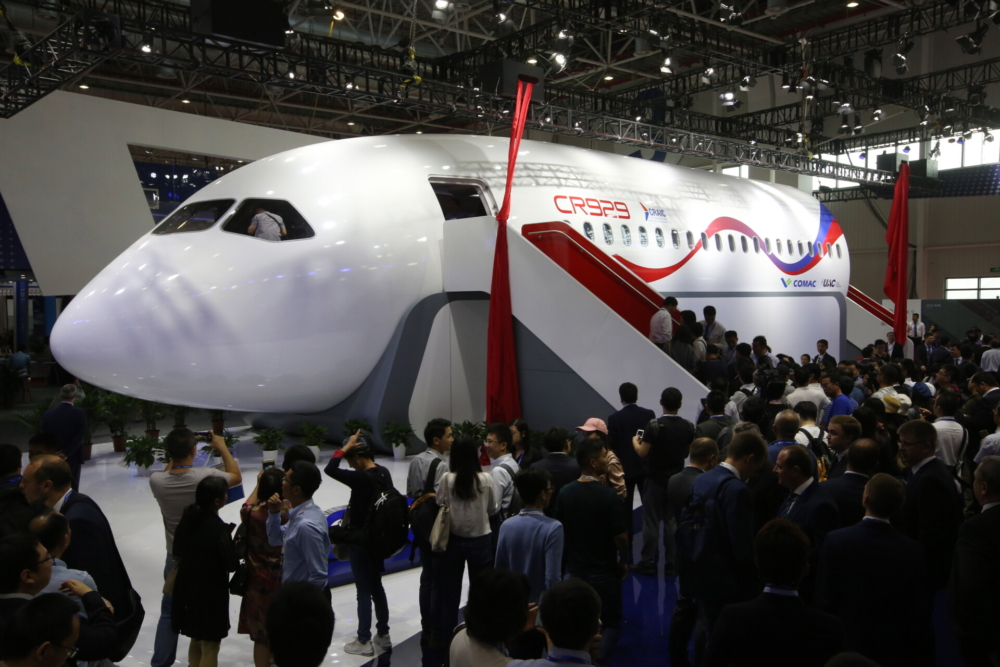Russia has begun making the wings of the CR929. Parts of the Sino-Russian dual-aisle long-haul aircraft are currently under construction by the AeroComposite company in Ulyanovsk by the Volga River. After years of significant delays to the program, CRAIC is now targeting mass production of the aircraft by 2025.

Wings underway
The fate of the Sino-Russian joint widebody project, the CRAIC CR929, long hung in the balance. Disagreements over market shares in China as well as subcontractors have made for slow progress on the aircraft that the two countries hope can wrestle some of at least their national long-haul airline markets away from Boeing and Airbus. While news on the project has been few and far between, it seems that Russia has now begun constructing parts of the CR929 airframe.
While at the aptly-named Composite Without Borders forum taking place earlier this week at the Skolkovo innovation center to the west of Moscow, Anatoly Gaidansky of the Irkut Corporation presented the immediate plans for the AeroComposite branch of the company. These involve parts for the MC-21, Russia’s narrowbody challenger set to receive certification before the end of the year – and the wings for the CR929.
“The capacities of the AeroComposite site in Ulyanovsk are almost at 100%. The plant is involved in two main projects. The first is the manufacturing of a wing and center section for the MC-21 aircraft. (…) The second is the creation of a wing for the Russian-Chinese CR929 aircraft. Prototypes are being made, and technological processes are being tested,” Gaidansky said, as reported by Media 73.

Domestically-made composites to escape sanctions
Rostec is the umbrella structure that holds all of Russia’s aircraft industry, including the United Aircraft Corporation and United Engine Corporation (UEC). The UEC is behind the Aviadvigatel PD-14 which will be an option for customers of the MC-21.
Rostec founded the AeroComposite company in 2008 to domestically produce parts that became hard to come by as a result of US sanctions against Russia. As such, it is central to the country’s move away from dependence on foreign-produced parts for its reemerging aviation industry.

AeroComposite is also producing some parts for the SSJ-NEW. The updated version, which may very well launch under a more Russian-sounding name, of the Sukhoi Superjet will consist of 95% domestically produced parts. The manufacturer has planned certification for 2023, with the first deliveries the following year.
Meanwhile, the joint COMAC project has announced it intends to begin mass production by 2025. Initially, the CR929 was planned to enter service in 2024. However, due to the significant delays to the program, it is now looking more like 2028 or 2029, officials say.
Do you think the CR929 has any chance against the Dreamliner and the Airbus A330neo? Especially with its late entry into the market? Leave a comment below and share your thoughts on the project.
from Simple Flying https://ift.tt/3nFKoUr
via IFTTT
Comments
Post a Comment